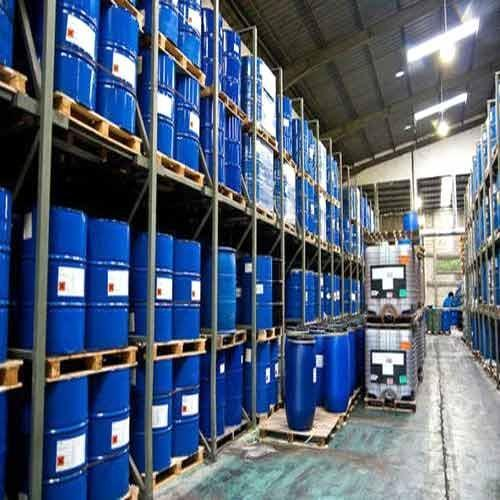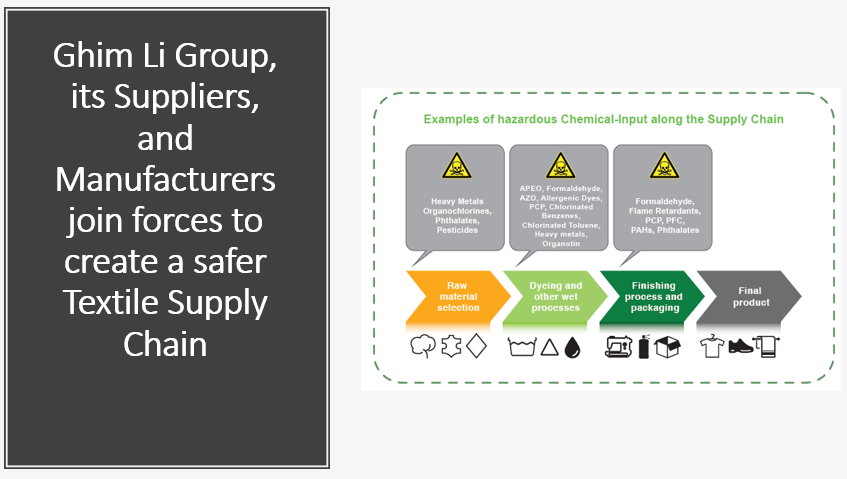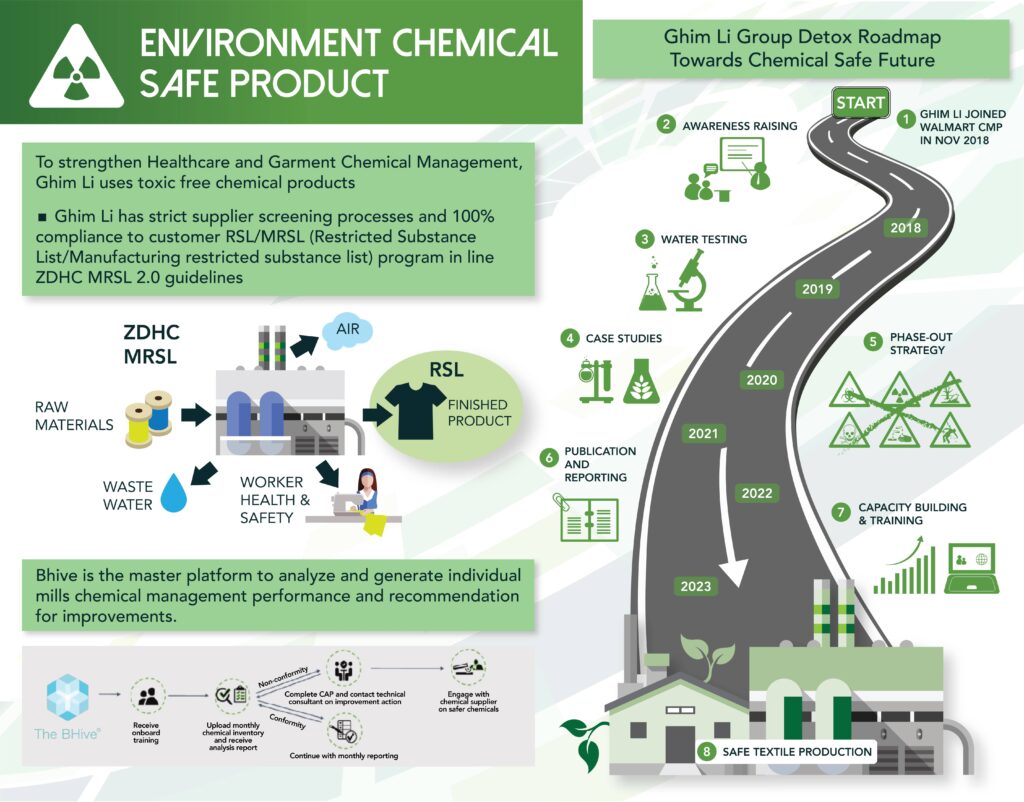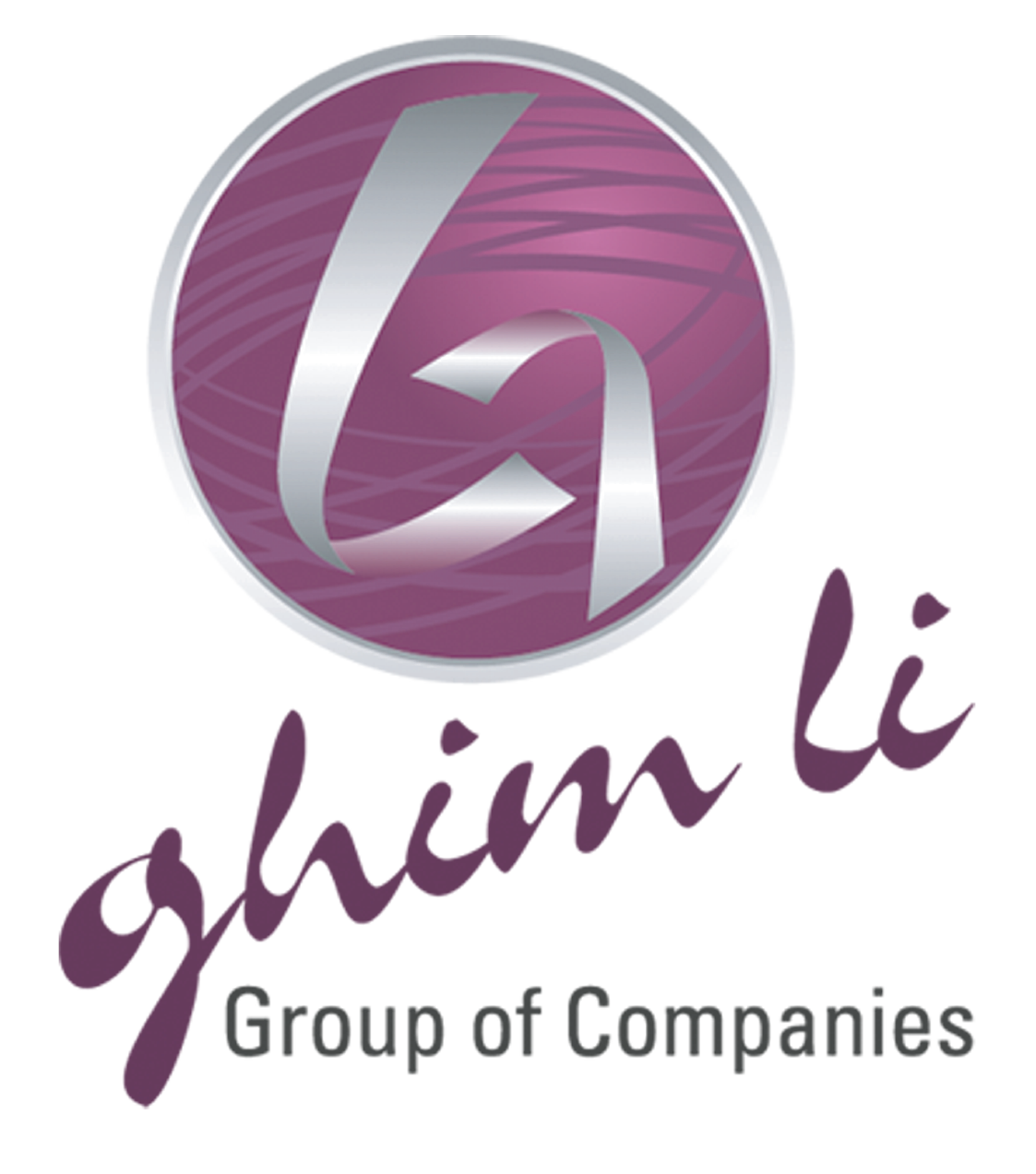GHIM LI GROUP’S COMMITMENT TO SAFER CHEMICALS
Environmental

Our Commitment
Ghim Li Group takes its responsibility for the society and the environment seriously.It is our AIM to assure the use of safer chemicals in the whole lifecycle and production procedures of apparel and healthcare products by no later than January 2022
What are we doing now?
Ghim Li Group has launched the DETOX Program partnering with Walmart in Dec 2018, which focuses on developing and implementing a roadmap to avoid hazardous chemicals in the textile supply chain.
Ghim Li together with its suppliers creates a substitution plan for hazardous chemicals.
Ghim Li Group supports its suppliers with information and training in managing chemicals aiming at a toxic free textile supply chain.


All products made by Ghimli must meet this specification by 2022 as follow:
- MRSL ( Manufacturing restriction substances List ) which limited the use of 17 hazardous chemicals groups in manufacturing process and address its impact to the environment and people’s well being
- Alkylphenol ( AP ) and Alkylphenol Ethoxylate ( APEO) ( incl. all isomers)
- Arylamines ( associated with Azo dyes)
- Carcinogenic dyes
- Allergenic disperse dyes
- Dyes – Navy Blue colourant
- Chlorobenzenes and chlorotoluenes
- Chlorophenols
- Chlorinated solvents
- Flame retardants
- Glycols
- Heavy metals
- Organotin compounds
- Polycyclic Aromatic hydrocarbons ( PAHs)
- Perfluorinated and polyfluorinated chemicals ( PFCs)
- Phthalates
- Short chain chlorinated paraffins ( SCCP)
- Volatile Organic Compounds ( VOC)
RSL ( Restricted substances List) which limited the use of 18 hazardous chemicals group applicable to any finished product which is supplied directly or indirectly to Ghimli and Ghimli’s customers
- Alkylphenol ( AP ) and Alkylphenol Ethoxylate ( APEO) ( incl. all isomers)
- Arylamines ( cleavable from azo dyes or in freely available form )
- Carcinogenic dyes
- Allergenic disperse dyes
- Dyes – Navy Blue colourant
- Chlorobenzenes and chlorotoluenes
- Chlorophenols
- Chlorinated solvents
- Glycols
- Heavy metals ( total contents)
- Organotin compounds
- Polycyclic Aromatic hydrocarbons ( PAHs)
- Perfluorinated and polyfluorinated chemicals ( PFCs)
- Phthalates
- Volatile Organic Compounds ( VOC)
- Others
- Ortho Phenylphenol
- Biocides – antimould
